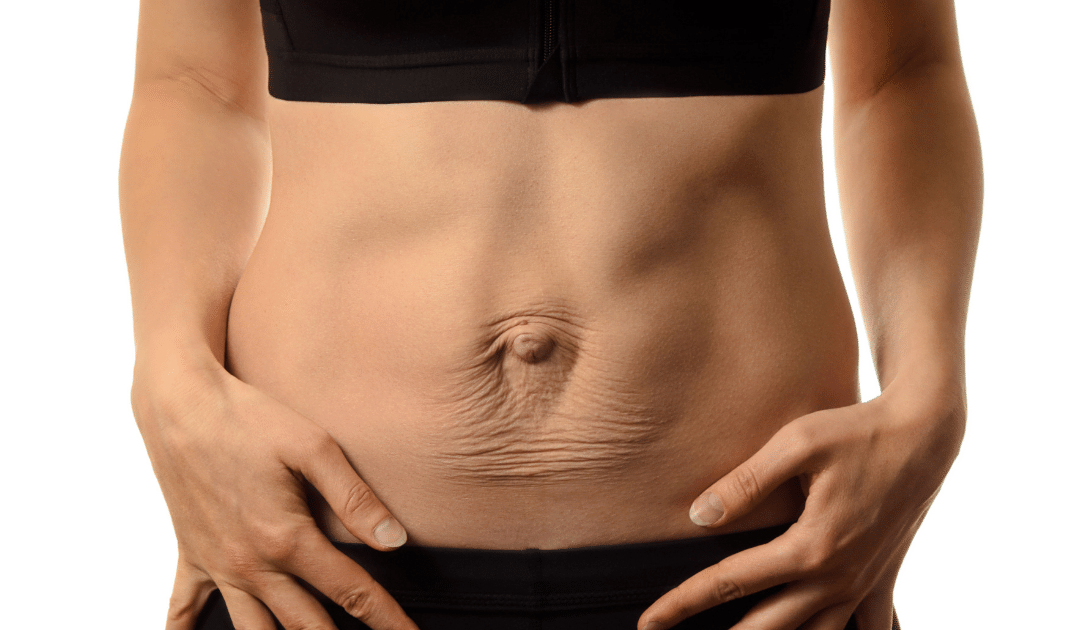Mommy tummy.
Abdominal pooch.
Jelly belly.
Gapping between the abdominal muscles.
All of these and many other (not great) terms have been used to describe diastasis rectus abdominis (DRA). Who can get it? Anyone. Pregnancy, multiple pregnancies, multiple gestation pregnancies (hello, twins!), abdominal weight gain, and chronic straining are common risk factors for developing DRA. This commonality is why DRA has become a hot topic of conversation among the pregnant and postpartum population.
What is Diastasis Recti?
Diastasis rectus abdominis refers to the widening or stretching of the connective tissue between the “six-pack” or rectus abdominis (RA) muscles. In order for it to be considered DRA, this gap must be greater than 3.0 cm as measured by ultrasound or roughly two finger widths. A finger width measurement is the easiest way to approximate DRA. While the width of this gap can get a lot of attention, pelvic health specialists tend to be most concerned about the tension and efficiency of loading across that fascia. This is to ensure that movement and exercise are the most effective.
This connective tissue that stretches in DRA is called the linea alba, which is the tendinous connection of all of your abdominals! The abdominals include your “six-pack” muscles as well as the external oblique (EO), internal oblique (IO), and transverse abdominis (TA). When this connective tissue anchor is stretched as with DRA, it changes the way muscles generate force through the abdomen. This change can make whole-body movement and support more challenging! Is this change in load efficiency something that lasts forever? No! Physical therapy can help a lot.
At Alpine, we believe there is no unsafe exercise for DRA- just a temporary coordination, pressure, and scaling problem. Tissue cannot get stronger if you don’t load it, and exercise or loading tends to be one of our favorite things around here.
Do you have questions about diastasis rectus abdominis? Are you concerned about having DRA and how to scale your workouts? Perhaps you’re unsure how to sit up in bed or how to pick something up that’s heavy, or maybe you just want to move well. Let one of our skilled pelvic health physical therapists answer your questions and tailor an exercise program for you and your goals.
